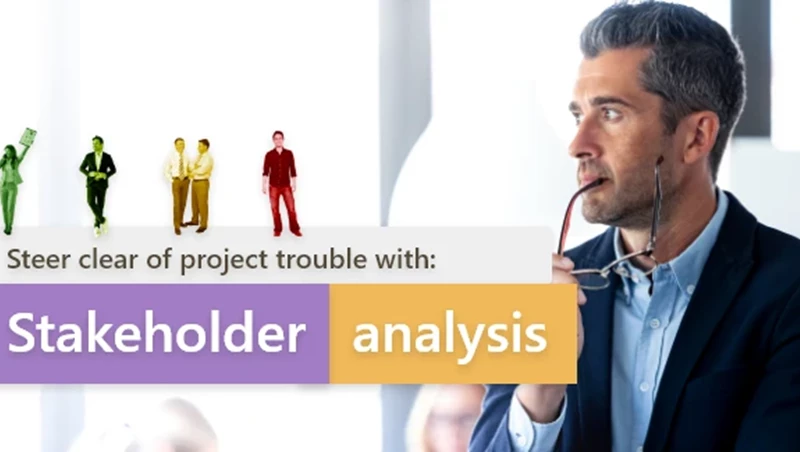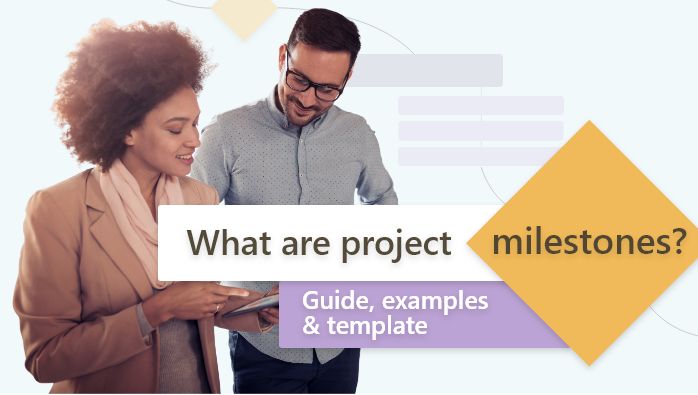Agile project management: The project manager's guide to success
6 min read
Get the complete guide to handle stakeholders in your project and avoid unpleasant surprises.
Time tracking
Build your perfect data foundation for spotless invoicing and deep business insights with easy time tracking.
Project management
Be a world champion project manager. Keep your projects on track - and profitable.
Resource management
Efficiently staff projects and run a predictable business with confidence.
Insights & Reporting
Get smarter - faster - to make clever decisions for long-term growth impact.
Project accounting & Invoicing
Invoice everything - fast and accurate - while staying on top of project finances.
Staff & Salary
Give accountants and HR an intelligent tool to eliminate draining administration.
Financial Systems
TimeLog offers standard integrations for all your favourite financial systems. Save time and reduce manual tasks.
Payroll Solutions
TimeLog offers standard integrations for multiple payroll solutions. Get easy salary administration and only enter payroll information once.
Add-ons
Track time automatically via Outlook, use gamification or find another add-on that can support your business.
Multiple Legal Entities
You can create synergy between your departments and across borders and offices with the Multiple Legal Entities module from TimeLog.
Business Intelligence
Utilise the insights you get from TimeLog to the fullest. Our system is ready to integrate with multiple BI solutions.
Partner Integrations
TimeLog PSA is part of a large ecosystem. Get an overview of all the partner integrations in the TimeLog family.
Economy department
Save 1-2 days a month on your invoicing process.
Project teams
From planning to execution and evaluation. Robust tools for every project manager.
Management teams
Create a performance-driven culture with solid reporting capabilities.
Large enterprises
Enhance operations and performance across entities, countries and departments.
NGOs and non-profit organisations
Simplify internal processes, spend less time on administration, and get documentation in place - at a discounted rate.
Blog
Get inspired to run an even better business with articles, guides and analyses.
Guides, podcasts and webinars
Get access to templates, guides and webinars that help and inspire you.
Help Center
Looking for help material and user guides to the TimeLog system? Look no further. Find all the help you need now.
Get a single source of truth
Discover how companies maintain a single source of truth across borders, departments, and currencies.
Get integrated
Discover the advantages customers gain from utilising our integrations and API.
Reporting in real-time
Explore how others leverage reporting to optimise their processes and make informed decisions.
Get started with resource planning
Discover how other companies thoroughly grasp their resources and enhance their ability to predict future trends.
Improved project financials
This is how the efficient financial toolbox from TimeLog helps project managers and CFOs improve their project financials.
Faster invoicing
Discover how other companies have slashed the time spent on invoicing by 75% - and uncover how you can achieve the same efficiency.
The Story of TimeLog
Get insights on TimeLog and how we can help you grow and evolve your business.
Employees
See who shows up every day to deliver the best PSA solution.
Career
What's life like at TimeLog? Are we hiring? Get the answer here.
Partner
Create even more value for your customers, as well as ours, as a TimeLog Partner.
Premium Service
Online Help Center, tailored onboarding and support from Day 1.
Corporate Social Responsibility
We work to ensure a positive impact on planet, people and businesses.
Security and GDPR
Learn more about how we work to keep your data safe and provide maximum security.
8 min read
Get a handle on your project's stakeholders and avoid unpleasant surprises. This blog post gives you a complete guide to stakeholder analysis in projects.

The stakeholder analysis is an essential tool for you as a project manager to identify and clarify the people and interests you need to consider if your project is to have any hope of succeeding.
But how do you do that? What is a stakeholder? And how do you identify them?
In this article, you get the answers to these questions + a guide to conducting stakeholder analysis.
[Get a handle on your projects: try TimeLog's project management tool]
So let's see who can influence your project - and how you take their wishes into account!
First, we need to understand what stakeholder analysis is.
In addition to a project plan, all projects need a communication plan.
When to communicate with whom? And how?
But to make a communication plan, you must first do a stakeholder analysis.
A stakeholder analysis is an exercise where you, as the project manager (preferably in collaboration with your project team) identify:
Once you have identified the project's stakeholders, you can define how they are affected by the project, how they influence it, their attitude towards the project and how you need to communicate with them.
You might also like: What are project milestones? Full guide, examples & templates
A well-conducted stakeholder analysis lets you reduce any resistance to your project early on and leverage support to help drive your project to completion.
Stakeholder analysis can sometimes be confused with a communication plan. But there are differences.
The communication plan may be determined by the contract with the customer, where you have decided how to report on progress, problems, delays, etc., together.
The stakeholder analysis is part of your communication plan but is not agreed upon with anyone or dictated by external circumstances in the same way. Instead, it is the project manager's tool to ensure proper communication with all those affected by or influencing the project.
If you never do stakeholder analysis, you won't know who might oppose your project - or how to deal with resistance.
Let's look at an example of stakeholder analysis - one situation with and without stakeholder analysis.
Imagine a scenario where you have to lead a project commissioned by your manager, but you need people from another manager's team.
But without you realising it, the other manager is unhappy with the project.
Therefore, he/she makes sure that the people you need are unavailable to the extent your project requires.
As a result, the project is delayed, may be poorly executed or even falls through.
And as project manager, you bear the responsibility.
In the (typical) situation above, the project manager only reacts late - after the resistance of the other manager.
Once a colleague or manager has resisted your project, changing their behaviour in a more constructive direction can be challenging.
They have difficulty climbing back down the tree they went up in.
But if you had done your stakeholder analysis beforehand and identified the other manager as a stakeholder with a strong influence on your project - and possible negative attitude - you could have initiated an early dialogue.
You could have identified why the person opposed the project and how you could meet the opposition before it erupted into full flame.
Another option was to actively involve the other manager in the project so that he or she felt ownership and would work actively to make the project a success.
The stakeholder analysis example above applies to a person who significantly influences your project's execution.
But there are several stakeholders you also need to consider.
Stakeholders, broadly defined, are all affected by your project, have an opinion on it or can make it easier or harder to execute.
Stakeholders don't have to be individual people. It can also be an organisation or a company.
To make it easier to work with them, stakeholders are often grouped into four categories:
Often, a stakeholder analysis matrix like the one below places the stakeholders into these categories.
The matrix also helps you determine how much energy you should spend on them.
Let's look at what characterises the four stakeholder categories.
This group of stakeholders has little influence on the implementation of the project, nor is it significantly affected by it.
They are probably not interested either so that you can give them general information.
This group is characterised by not having much influence on the project - while at the same time being significantly influenced by it.
They need to be informed along the way to relate to the changes the project will bring about for them.
NOTE (!) Although these stakeholders may not be necessary for the execution of the project, they are most often crucial for achieving the project's overall objectives, whether or not the project will be successful.
For example, you can technically carry out a project where your project team sets up an IT system or designs optimised workflows for a customer without considering the customer's employees.
However, it is unlikely to be successful if employees do not use your solutions afterwards.
Examples of high-interest, low-power stakeholders could be:
If you forget this group, you can easily set yourself up for trouble during the project.
This group is often not directly needed for your project - they may not contribute or be particularly affected by the project - but are often in a position to strongly influence project decisions.
Examples of low-interest, high-power stakeholders could be:
If you don't include them from the start and keep them well informed, they can often exert their influence during the project process if they feel sidelined. Or if you haven't agreed on the project scope with them from the start.
To complete your project, you must spend much time with this group.
These people often bring the level of expertise that is necessary for you to complete your project.
They also have much decision-making power, so you must inform and consult them frequently throughout the project.
Examples of high-interest, high-power stakeholders could be:
Because they are central to the execution of your project - for example, if they are responsible for a partial delivery - it is also important that they update you on delivery status or any issues that could impede progress.
Of all stakeholders, spend the most time with this group of stakeholders.
Let's see how you can do stakeholder analysis to avoid the worst resistance and make the most of your stakeholders.
First, you need to identify your project's stakeholders.
As a project manager, you won't have a complete overview of who is needed to execute the project, who has influence, and who will be affected.
Because of this, it's a good idea to involve your project group in a brainstorming session to identify the different stakeholders.
The project group's input is also valuable for the next steps of the stakeholder analysis.
Use post-its (or an online tool such as Miro) to get all the stakeholders on the "wall" so you can sort them later.
Ask the group who they can imagine:
The project team should be composed of the relevant people from around your organisation - possibly also from the customer - so that you include as many relevant views as possible.
You might also like: Plan for success with your new IT system
In this part of the analysis, you need to consider:
Use the stakeholder analysis matrix from earlier and place them in the four categories so you have a model to work from.
Once the project team has identified all possible stakeholders, selecting the most important ones for the project's success is essential.
In most projects, you won't be able to handle all possible stakeholders, so it's essential to prioritise.
There is no formula for who you should prioritise, but the higher the influence and the more necessary a stakeholder is, the more crucial you include them.
For example, a high-interest, high-power stakeholder will always be more important to prioritise than a low-interest, low-power stakeholder.
These questions also help you to identify any resistance to the project.
After prioritising the stakeholders, it is essential to identify conflicts of interest and crystalise them.
Does the project clash with the stakeholder's objectives or personal ambitions?
For this exercise, you can also list the advantages and disadvantages that stakeholders could experience from the project.
Your project group is particularly useful for identifying potential resistance because they are often closer to the stakeholders than you are as project manager and therefore know them better.
Once you've identified conflicts of interest, you're well-equipped to plan how to manage them.
Now, we come to what you'll enjoy as a project manager: drawing up a plan for how you'll handle all the different stakeholders.
This is where you can be at the forefront of any conflicts. A good plan can give you peace of mind because there is less risk of being surprised by unexpected resistance during the project.
In this exercise, you have to answer three main questions per stakeholder:
The last question can usually be met with early involvement, but sometimes it can be handy to have a negotiating tactic ready.
If their interests fundamentally conflict with the project's objectives, in what areas can you adjust the project to accommodate them? Who can influence the stakeholder/who can you use as a mediator?
If you have identified key stakeholders you can't see any viable path to meet/manage, it is important to bring this up quickly with your steering group.
Such a stakeholder is a significant risk factor in the project, and as the project manager, you must identify risks.
Once you have completed your analysis and presented it to the steering group, you are ready to proceed with the project if necessary.
Like all other tools in project management, you need to keep your analysis up to date.
Because stakeholders often move or become less relevant as your project progresses.
Some stakeholders are only relevant at certain stages, while others may change their attitude towards the project as they gain more experience.
Review your stakeholders periodically, and feel free to bring them up with the project team.
Is the analysis still relevant? Have new stakeholders emerged?
Updating your stakeholder analysis throughout the project creates the best conditions for steering safely clear of conflicts of interest and unpleasant surprises.
A stakeholder analysis is an overview of your project's main stakeholders, when to communicate with them and how to deal with any opposition to your project.
In the stakeholder analysis, you group stakeholders according to how much influence they have on your project, how much you need them to get there - and how much they are interested in or affected by the project.
You should do your stakeholder analysis at the very beginning of the project to counter any resistance to the project early on.
You will need to update the analysis continuously throughout the project, as the people involved may well change position from your initial analysis.
Everyone who will be affected by your project, everyone who contributes to the project or can influence or have an opinion on the project.
Stakeholders are often individuals, but can also be organisations, parties or other businesses.
As the project manager, you are responsible for preparing the stakeholder analysis. But you mustn't carry it out alone.
Involve the whole project team in preparing the analysis, so you get all perspectives and identify stakeholders you don't immediately see as a project manager.
There are several steps in performing stakeholder analysis, which you can read here in the blog post:

6 min read
Get the complete guide to handle stakeholders in your project and avoid unpleasant surprises.

25 min read
Get the complete guide to handle stakeholders in your project and avoid unpleasant surprises.

12 min read
Get the complete guide to handle stakeholders in your project and avoid unpleasant surprises.

15 min read
Get the complete guide to handle stakeholders in your project and avoid unpleasant surprises.

5 min read
Get the complete guide to handle stakeholders in your project and avoid unpleasant surprises.

6 min read
Get the complete guide to handle stakeholders in your project and avoid unpleasant surprises.

9 min read
Get the complete guide to handle stakeholders in your project and avoid unpleasant surprises.
![Guide: Resource management [4 things you need to get right]](https://timelog.com/hubfs/resource-mng-blog-index-1.webp)
8 min read
Get the complete guide to handle stakeholders in your project and avoid unpleasant surprises.

8 min read
Get the complete guide to handle stakeholders in your project and avoid unpleasant surprises.